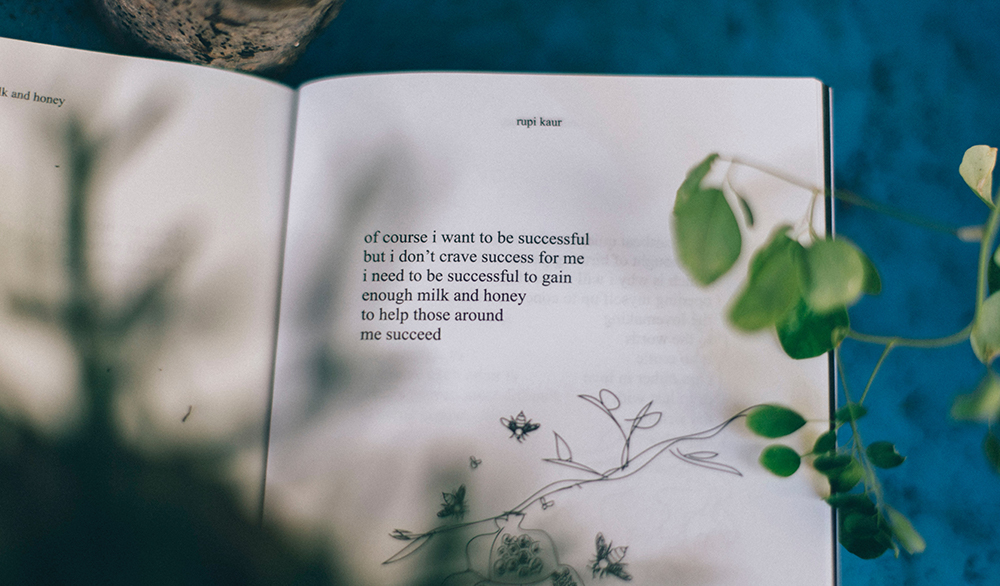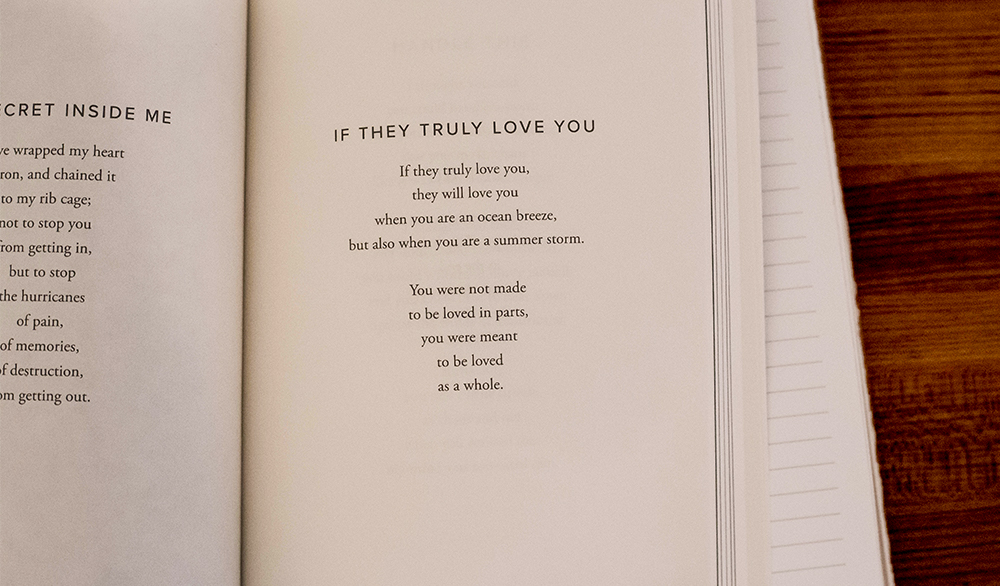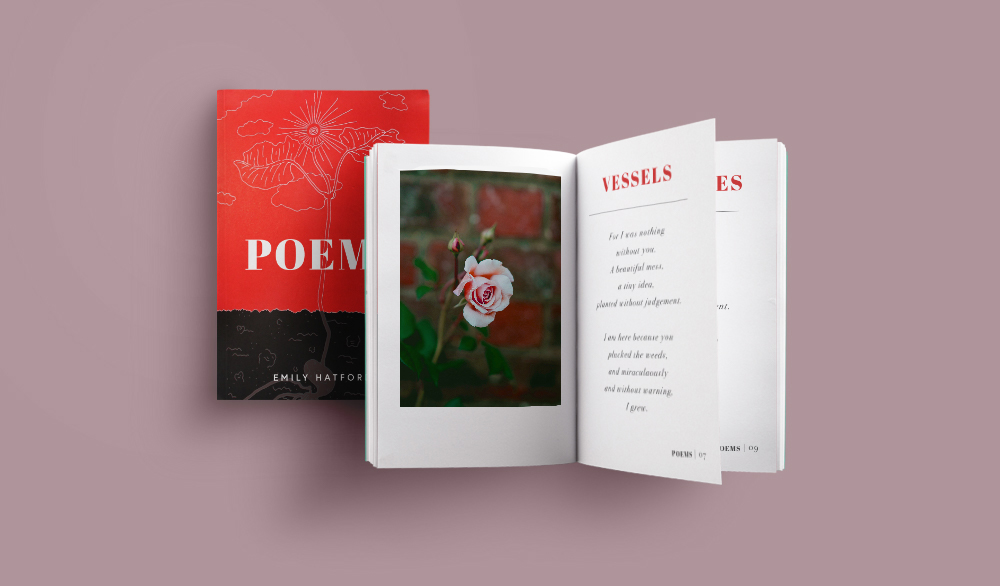How to write a poetry book
For emerging and established poets, publishing a book stands out as a milestone achievement. Besides providing a boost of creative confidence, the process of writing a book of poems is rewarding on a personal and professional level. It can give you something to strive for, inspire you to build a creative practice, motivate you to refine your writing skills, create opportunities for public recognition, and produce a beautiful showcase for your creative work.
Whether you’ve only written a few stanzas or a whole stack of poems, you can create your own path to publication. Follow this guide to learn how to write a poetry book or develop your poetry manuscript into a full-length volume:
1. Write daily
Cultivating a regular writing practice is essential if you want to write enough poems to fill a book. Some poets begin daily writing sessions with a specific project in mind. Others start by journaling or free writing (a technique akin to brainstorming, which involves quickly writing down sentences or phrases as they come to you, without stopping or thinking about grammar). This can help get ideas flowing or lead you to an image or line that will inspire a new poem. For a list of poetry writing prompts, swing by the Poets & Writers website.
2. Read lots of poetry
Think of it as creative fuel! The more books you read, the more you broaden your understanding of what a poem can be, and how many different kinds of poetry books there are. Familiarize yourself with classic poetry as well as contemporary books by living writers. Explore various schools of poetry (from Modernist to Beat to Confessional poetry, and everything in between). Knowing the history of your genre is part of the creative process, and it’s empowering. When you write a poetry book, you become part of the creative conversation with poets past and present.

3. Study the craft of writing poems
As with any creative field, learning the traditions and techniques of poetry will improve your writing skills. Take some time to immerse yourself in the craft of poetry. You may know instantly whether or not you like a particular poem, but do you know what makes the writing effective? Think about the way stanzas, enjambment, meter (or rhythm), diction, imagery, similes, and metaphors function in a poem you love. If that sounds like a lot, focus on one poetic element at a time—observe how it works in poems you read and practice using it in your own writing. The Poetry Foundation has a wonderful glossary of poetic terms to get you started, along with daily poems, an online magazine, podcasts, and literary reviews.
4. Experiment with different forms
Most writers are familiar with poems that feature rhyming patterns, like the sonnet or haiku form. But have you ever tried writing a sestina or villanelle? Do you typically write in short, unpunctuated lines or long stanzas full of complete sentences? A lot of contemporary poetry is written in free verse (without a rhyme structure or regular meter). There’s plenty of room for experimentation in the world of poetry, while still making use of key literary techniques. As a challenge, try writing poems that look and sound different from the ones you typically write. Taking creative risks can lead to great discoveries!

5. Avoid clichés
This writing tip might summon up memories from English class, but it’s sound advice for writers at every level. You know a clichéd phrase when you see it or hear it, which is proof that it’s overused and unoriginal. Examples include: “fluffy as a cloud,” “at the speed of light,” “clear blue water,” “scared to death,” “the writing on the wall,” and “lasted an eternity.” Get in the habit of checking your poems for such hackneyed phrases and removing them. Poetry derives its power from the creative use of language, so choose your words carefully.
6. Ask for feedback
Opening yourself up to positive and negative feedback is part of the creative process when writing a poetry book. If the thought of getting constructive criticism makes you recoil, remember that growing and improving as a writer involves assessing your work. Successful and experienced poets need help editing, and so will you. Try joining a poetry community online or creating a writing group at your local bookstore or café. If you look around, you will discover poets just like you who want to become better writers, exchange work, and support one another.

7. Give yourself time to revise
It’s natural to latch on to that surge of creative energy when you’ve just written something new, and you love it, and wouldn’t change a thing! Occasionally you might keep the first draft as is, but more often, you’ll want to step away and return to it another day with fresh eyes. After reflection, you may decide to add another whole page or cut repetitive, vague lines to make the poem even tighter and stronger.
8. Choose your best work
It can be tempting to include every poem you’ve ever written, especially if this is your first poetry book. However, any weak poem you leave in will detract from the best ones in the book. To showcase the writing, you are most proud of, you’ll probably need to cut some poems (You can always send these to friends, submit them to journals, or put them in your next collection!). For a full-length poetry book, aim to collect around 40 to 70 pages of polished work. If your stack of poems is on the small side, don’t stress—publish a chapbook instead! Chapbooks are shorter collections of poems that average between 20 to 40 pages, and they make a great first book project.

9. Organize your poems
Your poetry book should be a collection of poems that work together or feel related in some way. Maybe the book centers around a particular theme, form, style, or series of life events. It’s your creation, so you decide what connects the individual poems and how they should be sequenced. Think of the first poem in your book as an opening act. Which poem best invites readers into your world and sets up the entire book? Similarly, what is the last poem (the final image!) that you want to impart on your reader?
10. Select a book title
Choosing a title for your book is an exciting moment! If you need ideas, consider naming the book after one of your strongest poems or borrowing a favorite line or image from the collection. You want your poetry book to capture the imagination of a new reader, so don’t settle for generic titles like “Selected Works” or “Poetry by …” Instead, give your poetry collection a unique title that is intriguing and reflects your own poetic language.
***
Ready to see your collection of poems in print? Keep the creative momentum going with tips on how to self-publish your poetry book with Blurb.

